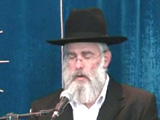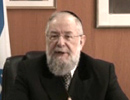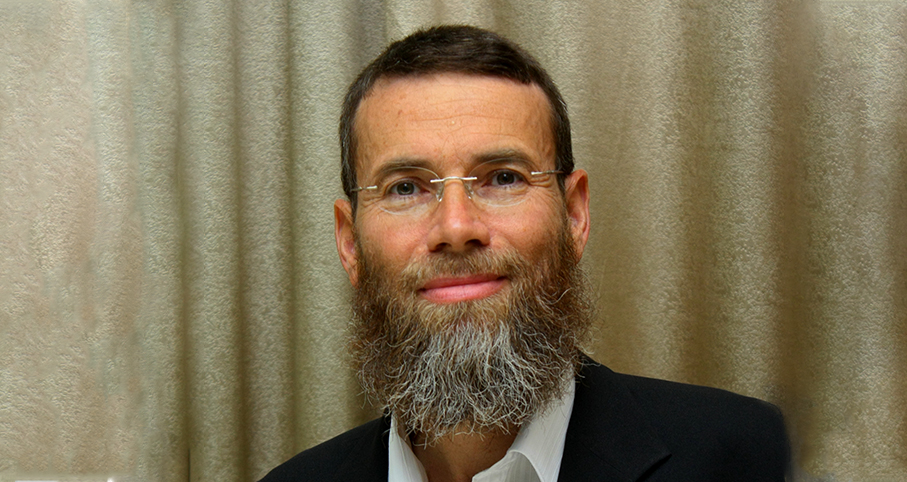Beit Midrash
- Torah Portion and Tanach
- Shmot
- Vayakhel
The ashes of the red heifer, blended with various other ingredients, creates a compound that somehow manages to make spiritually pure those who had been defiled after coming into contact with a dead body. Yet at the very same time that the person is purified, the Kohen who administers the compound is himself rendered tamei!
How can this be? How can the very same item have the exact opposite effect on two different people?
But to me, this is not the most challenging part of the puzzle. I find it even more mysterious that the ashes of a dead thing can bring one back from the dead; i.e. remove the stain of death from one who had touched death. Now,
I can understand how some acts - such as immersion in a Mikva - can serve to alter, or negate, the imprimatur of death, for in that instance it is life (in the form of water, a primary source of all life) which dispels death. But how
can death cancel death?! This is indeed mystifying.
While I certainly do not claim to be smarter than Shlomo HaMelech, who lamented that he could not unravel this ancient riddle, I do have a thought on the matter.
In the circle of life, there is a very close proximity of death to life. A leaf dies when it falls off a tree, but when it flutters to the ground it enriches the soil, which will then give life to new plants. A woman’s giving birth to a child will cause
her reproductive system to (temporarily) go sterile. A person dies, but at the moment of his death, he enters into life eternal (thus a cemetery is referred to in Jewish tradition as a Beit Chaim, a house of life).
On a national level, our greatest moments of life are connected to the bitterest pangs of death. So it was when we reached the lowest level of degradation in Egypt, only to be followed swiftly by our Redemption. And so it was 70 years ago, when from the ashes of the Shoa there arose the rebirth of our great nation Israel. It is as if Hashem cannot bear for us to remain tamei for long; we must always return to vibrant, dynamic, active life.
Sefer Shmot began with our entrance into slavery – a kind of living death - but it ends with the building of the Mishkan, a place that holds the Luchot - Torat Chayim - & the Shechina, the spirit of the living G-d. The final word is,
& shall always be, L’Chayim – To Life!
The section of the Torah read as Maftir this Shabbat of Parshat Para has baffled scholars & commentators for all of our history. Taken from the Sedra of Chukat, it is known as the Chok par excellence, the most perplexing of all the seemingly unknowable statutes of the Torah.
The ashes of the red heifer, blended with various other ingredients, creates a compound that somehow manages to make spiritually pure those who had been defiled after coming into contact with a dead body. Yet at the very same time that the person is purified, the Kohen who administers the compound is himself rendered tamei!
How can this be? How can the very same item have the exact opposite effect on two different people?
But to me, this is not the most challenging part of the puzzle. I find it even more mysterious that the ashes of a dead thing can bring one back from the dead; i.e. remove the stain of death from one who had touched death. Now,
I can understand how some acts - such as immersion in a Mikva - can serve to alter, or negate, the imprimatur of death, for in that instance it is life (in the form of water, a primary source of all life) which dispels death. But how
can death cancel death?! This is indeed mystifying.
While I certainly do not claim to be smarter than Shlomo HaMelech, who lamented that he could not unravel this ancient riddle, I do have a thought on the matter.
In the circle of life, there is a very close proximity of death to life. A leaf dies when it falls off a tree, but when it flutters to the ground it enriches the soil, which will then give life to new plants. A woman’s giving birth to a child will cause
her reproductive system to (temporarily) go sterile. A person dies, but at the moment of his death, he enters into life eternal (thus a cemetery is referred to in Jewish tradition as a Beit Chaim, a house of life).
On a national level, our greatest moments of life are connected to the bitterest pangs of death. So it was when we reached the lowest level of degradation in Egypt, only to be followed swiftly by our Redemption. And so it was 70 years ago, when from the ashes of the Shoa there arose the rebirth of our great nation Israel. It is as if Hashem cannot bear for us to remain tamei for long; we must always return to vibrant, dynamic, active life.
Sefer Shmot began with our entrance into slavery – a kind of living death - but it ends with the building of the Mishkan, a place that holds the Luchot - Torat Chayim - & the Shechina, the spirit of the living G-d. The final word is,
& shall always be, L’Chayim – To Life!

One nation Potential
Parashat Vayakhel
Rabbi Zev Leff | Adar A, 5763

The Beauty of Holiness or the Holiness of Beauty
Vayakhel 5779
Rabbi Jonathan Sacks | Adar I 23 5779

Parsha Summary: Vayakhel
An Overview of the Torah Portion
Rabbi Stewart Weiss




















